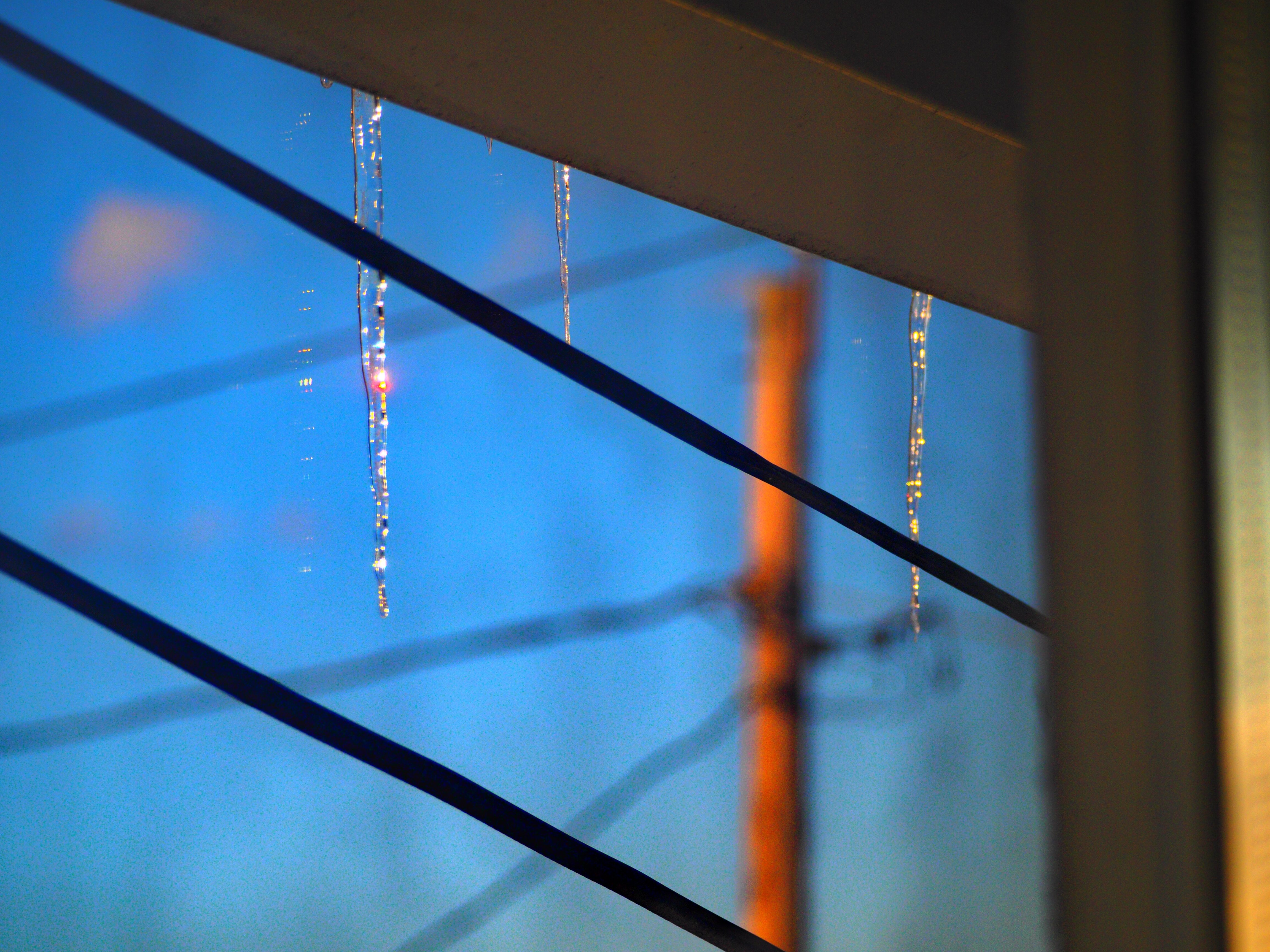-
Posts
44,789 -
Joined
Content Type
Profiles
Blogs
Forums
American Weather
Media Demo
Store
Gallery
Everything posted by LibertyBell
-
Both of those were historic. I was in the Poconos for the May 2020 event and there was 2-4 inches of snow there and it snowed all night Saturday night and almost all day Sunday with wind chills near 0 and lows in the teens and highs in the 20s. And then Monday we had thunderstorms with hail there! Brought back memories of May 1977! October 2011 had thundersnow and 20 inches of a very wet snow in the Poconos!
-

Jan 11th-12th Super Bomb or Super Bummed?
LibertyBell replied to Rjay's topic in New York City Metro
I understand. High fluff may actually work in this case because of the extended cold period we've been in. The other scenario I often see 1-3 inches being forecast is during a mix or changeover scenario. There seems to be an imprecise nature to timing when mixing or changing over will occur and/or they are forecasting for a county in which one part of the county will change over before a different part will. Other forecasts along those lines that I find really annoying are 4-8 and 6-12.- 993 replies
-
- metsfan vs snowman
- bomb
-
(and 2 more)
Tagged with:
-

Jan 11th-12th Super Bomb or Super Bummed?
LibertyBell replied to Rjay's topic in New York City Metro
and yet 1-3 is the most common forecast we get around here. Ranges don't work like that though. A forecast of 1-3 is really a forecast for 2" with a margin of error of +/- 1". The moisture content difference between 1" and 3" is only 0.2"- 993 replies
-
- metsfan vs snowman
- bomb
-
(and 2 more)
Tagged with:
-
Too bad we didn't get an October snowfall lol, October 1979 saw a surprise October snowfall all the way down to DC.
-
JFK might beat those numbers, my house just shook with our latest wind gust, Walt!
-
Wow, JFK hit -2 at three different points that morning, including as late as 9 AM! That 10 degree *high* from 7 PM to 10 PM would have really annoyed me lol, the real high was less than that, during the day. Do you know of the last time JFK officially had a low below zero and a high below 10? What was the lowest wind chill that morning with winds of 30 mph gusting to 40 mph and was that the lowest wind chill ever recorded at JFK? Thanks!
-
That 1985 arctic outbreak was even more extreme than the one in 1994. Didn't NYC have this long streak without any 6" events during the 80s? It barely ended with a 6.2" event in the early 90s in March I think? But it was a mix storm and JFK's streak without 6" events continued... Chris do you know offhand what the longest streaks without a 6" storm were at both NYC and JFK?
-
Just talking about January specifically.
-
I wish we could get lake effect snow here off of West Hempstead Lake lol. What's the smallest lake that lake effect snow has been known to occur near?
-

Snowfall NYC subforum Jan 6 and OBS if needed
LibertyBell replied to wdrag's topic in New York City Metro
Do you have final totals for the Cape May to Atlantic City area? Thanks! -

Snowfall NYC subforum Jan 6 and OBS if needed
LibertyBell replied to wdrag's topic in New York City Metro
2016 was the last time we had a megalopolis snowstorm, wow. 9 years ago. -
Walt it sounds like you feel it might be just a little too mild for significant snowfall for NYC, Long Island, etc, post January 20th?
-
such a reminder of what Januarys in the 80s were like. `1. a little snow and ice on the ground, just enough to make you slip and fall. 2. temperatures below freezing all day. 3. very windy and extreme wind chills.
-

Jan 11th-12th Super Bomb or Super Bummed?
LibertyBell replied to Rjay's topic in New York City Metro
I doubt anyone will be unhappy if we get 1-3, any snow is good snow.- 993 replies
-
- 1
-

-
- metsfan vs snowman
- bomb
-
(and 2 more)
Tagged with:
-

Jan 11th-12th Super Bomb or Super Bummed?
LibertyBell replied to Rjay's topic in New York City Metro
you got 3 sausages for this post for some odd reason.- 993 replies
-
- metsfan vs snowman
- bomb
-
(and 2 more)
Tagged with:
-

Jan 11th-12th Super Bomb or Super Bummed?
LibertyBell replied to Rjay's topic in New York City Metro
It seems like it snows more often in milder patterns than in colder patterns. For some reason snow is more likely when it's in the 50s a few days before and after a snowstorm, but when you have a week of temperatures in the 20s and low 30s then snow is much less likely. Go figure.- 993 replies
-
- 1
-

-
- metsfan vs snowman
- bomb
-
(and 2 more)
Tagged with:
-

Jan 11th-12th Super Bomb or Super Bummed?
LibertyBell replied to Rjay's topic in New York City Metro
as long as it's sunny and warm, not rainy and warm- 993 replies
-
- metsfan vs snowman
- bomb
-
(and 2 more)
Tagged with:
-

Jan 11th-12th Super Bomb or Super Bummed?
LibertyBell replied to Rjay's topic in New York City Metro
really no different than any of the other storms so far this winter. 4 inches might be a bit too high, but 1-3 inches sounds about right. It has the potential to be as good as our best December storm which dropped 3 inches here.- 993 replies
-
- metsfan vs snowman
- bomb
-
(and 2 more)
Tagged with:
-

Snowfall NYC subforum Jan 6 and OBS if needed
LibertyBell replied to wdrag's topic in New York City Metro
It may not be final with more snow moving in with the ULL, Don. -

Jan 11th-12th Super Bomb or Super Bummed?
LibertyBell replied to Rjay's topic in New York City Metro
Somehow I see the same mistakes being made if that storm recurred in current times.- 993 replies
-
- 1
-

-
- metsfan vs snowman
- bomb
-
(and 2 more)
Tagged with:
-

Jan 11th-12th Super Bomb or Super Bummed?
LibertyBell replied to Rjay's topic in New York City Metro
Did January 1996 use today's measurement practices though? It was undermeasured.- 993 replies
-
- metsfan vs snowman
- bomb
-
(and 2 more)
Tagged with:
-

Jan 11th-12th Super Bomb or Super Bummed?
LibertyBell replied to Rjay's topic in New York City Metro
The Central Park measurer wasn't any good back then either.- 993 replies
-
- metsfan vs snowman
- bomb
-
(and 2 more)
Tagged with:
-

Jan 11th-12th Super Bomb or Super Bummed?
LibertyBell replied to Rjay's topic in New York City Metro
January 1996 was also undermeasured. I was in the same location for January 1996 and PD2 and PD2 was 26 inches at JFK, January 1996 was in no way shape or form only 22 inches. And February 1978 was in no way shape or form only 14 inches but that's a different story.- 993 replies
-
- metsfan vs snowman
- bomb
-
(and 2 more)
Tagged with:
-

Jan 11th-12th Super Bomb or Super Bummed?
LibertyBell replied to Rjay's topic in New York City Metro
Alcohol and Pot- 993 replies
-
- 3
-

-
- metsfan vs snowman
- bomb
-
(and 2 more)
Tagged with:
-

Jan 11th-12th Super Bomb or Super Bummed?
LibertyBell replied to Rjay's topic in New York City Metro
does Santa Claus ever lie?- 993 replies
-
- 1
-

-
- metsfan vs snowman
- bomb
-
(and 2 more)
Tagged with:

